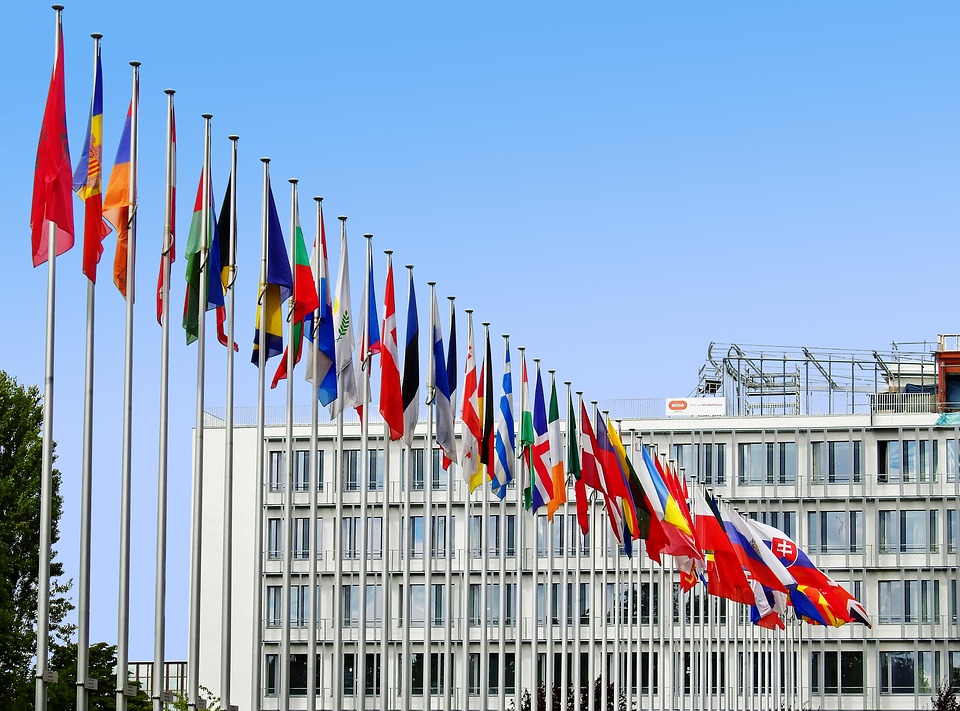The United States is the world's largest provider of foreign aid. It regards multilateral aid as an important tool of foreign policy and soft power. It maintains national security and prosperity through multilateral aid and actively shapes the global governance system.
Total words1936About5minutes
Author: Julia Sun
The United States is the world's largest economy and largest provider of foreign aid. In 2019, the total official development assistance of the United States was US$39.2 billion, 45% higher than Germany, which ranked second.
The United States regards multilateralism as the basic rule of the global governance system
The United States is the main formulator of multilateral international rules after World War II. It is also one of the founders of the United Nations and the location of the United Nations headquarters. As the world's largest economy, the United States is the main fund provider to the United Nations. Since 1945, successive US governments have broadly supported the multilateral system represented by the United Nations.
The Trump administration has withdrawn from the Paris Agreement and UNESCO, announced its withdrawal from the World Health Organization, and has repeatedly proposed significant cuts in funding to the United Nations.Abandoning the fundamental rules of the long-standing U.S.-led global order.
Biden leads the United States back to the stage of multilateralism. On the day of his inauguration, Biden rejoined the Paris Agreement and reversed his decision to withdraw from the WHO. In February this year, the U.S. government changed its position and announced its support for Nigerian candidate Ngozi Okonjo-Iweala as the director-general of the WTO. Two weeks later, Biden pledged at the Group of Seven (G7) meeting that the United States would provide support to the Global Alliance for Vaccines and Immunization (Gavi) andCOVAX The Advance Market Commitment Facility (AMC) contributed US$2 billion and committed a further US$2 billion in 2021 and 2022. These measures send a strong signal that the United States is returning to the multilateral stage.
Multilateral aid refers to development assistance provided by a country's government to intergovernmental multilateral organizations such as the United Nations, the World Bank or the European Union. Compared with bilateral aid, multilateral aid has many participants and a wide coverage. It is an important foreign aid method today.
Why does the United States value multilateral aid?
(1) The United States regards multilateral assistance as an important tool of foreign policy and soft power.
U.S. foreign aid originated from the geopolitics of the Cold War. After World War II, the United States invested heavily in the European Renaissance Plan to resist the influence of communism and consolidate the capitalist system. During the Cold War, the United States used large-scale foreign aid to unite all parties to contain the Soviet Union. After the collapse of the Soviet Union, the scale of U.S. foreign aid began to decline.
After the "9·11" terrorist attacks, national security became an important factor affecting U.S. foreign aid. The U.S.’s foreign aid continues to rise, and it has increased assistance to counter-terrorism-related countries to stabilize the situation in conflict areas, win over allies, promote democracy, or support other countries’ counter-terrorism and law enforcement operations.
In March this year, the "Interim National Security Strategic Guidelines" released by the Biden administration proposed that the United States will continue to engage in international cooperation to build a more secure, dynamic, and prosperous world. The policy also proposes that the United States will regain its leadership position in international institutions and work with the international community to address the climate crisis and the ongoing threats of the COVID-19 epidemic and other infectious diseases that could lead to pandemics.
(2) Multilateral aid is an effective supplement to bilateral aid
Multilateral aid has advantages that are different from bilateral aid. Multilateral aid can mobilize aid resources from more countries to jointly promote global development, provide diversified aid tools, and work in more countries and in more fields. In addition, the political neutrality of multilateral institutions provides the United States with a political buffer. When the United States is unable to support a certain country or area due to domestic political factors, it can continue to maintain its influence by supporting multilateral organizations.
U.S. multilateral assistance focuses on supporting areas such as health, humanitarian assistance, food security, and economic growth. It is consistent with bilateral assistance, and can combine the resources and expertise of multilateral organizations to coordinate the efforts of all parties and effectively supplement bilateral assistance. On the one hand, the United States focuses its bilateral assistance on a few countries and areas, while at the same time maintaining its influence on a broader scale through multilateral assistance.
(3) The United States safeguards national interests such as security and prosperity through multilateral assistance
The U.S. national security strategy lists strengthening cooperation with international organizations as a diplomatic and foreign policy priority. The 2010 Presidential Policy Directive on Global Development links the core interests of the United States such as foreign aid and national security and prosperity, and clearly requires the U.S. government to combine the comparative advantages of different institutions to carry out strategic cooperation with international institutions.
The United States focuses on consolidating and strengthening its dominant influence on key multilateral institutions such as the World Bank. International organizations such as the United Nations and the World Bank established after World War II are the core of the multilateral international order and the most representative and authoritative intergovernmental international organizations in the world. U.S. multilateral aid mainly cooperates with international financial institutions such as the World Bank and key United Nations agencies such as the World Food Program. By paying a relatively high proportion of dues and donations, it has exerted a greater influence on key United Nations agencies.
(4) The United States actively shapes the global governance system through multilateral assistance
The United States uses multilateral institutions such as the United Nations to promote the implementation of important initiatives and actively shape the global governance system. The United States exports its standards and practices through multilateral banks such as the World Bank; continues to shape the "more peaceful, stable and prosperous" international system it advocates through the United Nations High Commissioner for Refugees, the World Health Organization, and the World Health Organization; and affects the reform of the United Nations development system. Improve the efficiency of multilateral institutions.
After World War II, the United States pursued multilateralism and promoted the formation of a U.S.-led international order. By providing multilateral assistance, the United States more effectively safeguards its national interests and actively shapes the global governance system.
This article was first published on the WeChat public account "International Development Observation". All rights reserved, please indicate the author and source when reprinting.
references:
https://www.csis.org/analysis/competing-and-winning-multilateral-system-us-leadership-united-nations
Past review
- Trump vs. Biden: A Development Perspective on the 2020 U.S. Presidential Election
- The International Implications of Biden's Development Cooperation Policy
- Three White Papers Reveal Trends in China's Development Cooperation
- Joining the Global COVID-19 Vaccine Initiative: A Win-Win for China and the World

